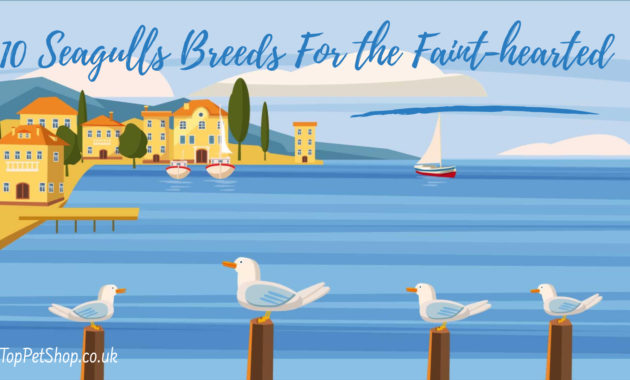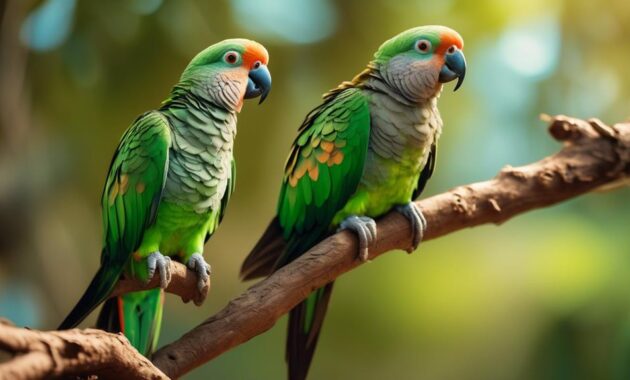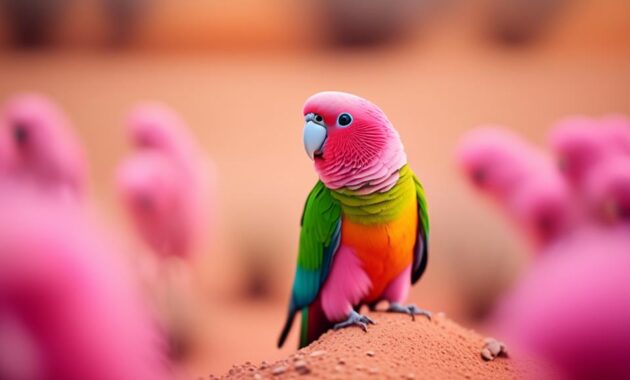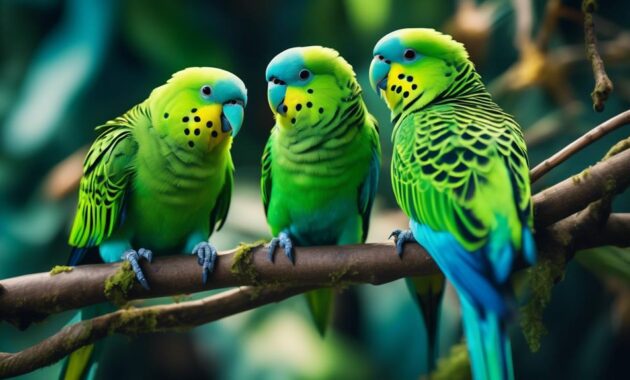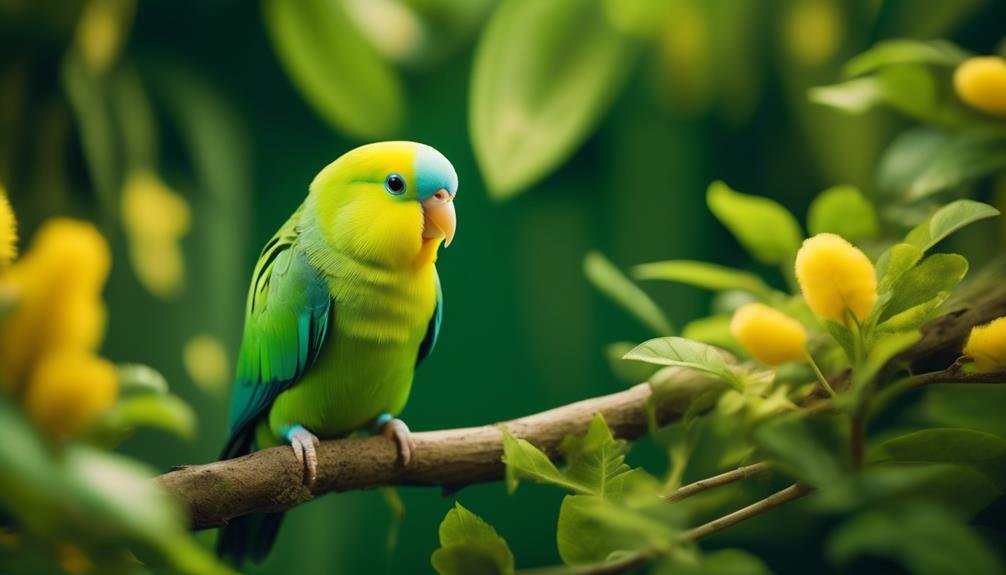
Is the Yellow Faced Parrotlet truly as colorful and charming as it is rumored to be? This small bird has gained quite a reputation for its vibrant plumage and captivating personality.
As you delve into the world of these avian gems, you will discover the truth behind their colorful feathers and learn about the unique traits that make them so captivating.
From their feisty nature to their ability to mimic sounds, the Yellow Faced Parrotlet is full of surprises.
So, get ready to be enchanted by these delightful creatures as we explore the many wonders of their colorful and charming world.
Key Takeaways
- Yellow Faced Parrotlets are one of the largest species in the parrotlet family, measuring approximately 6 inches long and weighing only 2 ounces.
- They have a lifespan of 10-20 years, similar to other parrotlet species, and can live a long and healthy life with proper care.
- Yellow Faced Parrotlets have a vibrant coloration, with a bright yellow head spreading to the chest and turning green on the lower abdomen, complemented by a light blue-grey color on the back of their head.
- These parrotlets are relatively quiet birds, making natural calls consisting of bright chirps and tweets, and they can sometimes learn a few basic words or mimic simple sounds.
Size and Lifespan
Yellow Faced Parrotlets are relatively large members of the parrotlet family, measuring approximately 6 inches in length and weighing a mere 2 ounces. Despite their small size compared to other parrot species, they possess a big personality. These charming birds have a lifespan of 10-20 years, similar to other parrotlet species. With proper care, they can live a long and healthy life.
Yellow Faced Parrotlets are known for their unique colors and combinations. Their head is mostly bright yellow, spreading to the chest and turning green on the lower abdomen. The back of their head has a light blue-grey color, while their wings and back are dark olive green with grey tones.
Their quiet nature makes them suitable as apartment pets, and they make natural calls consisting of bright chirps and tweets.
Bird Species and Traits
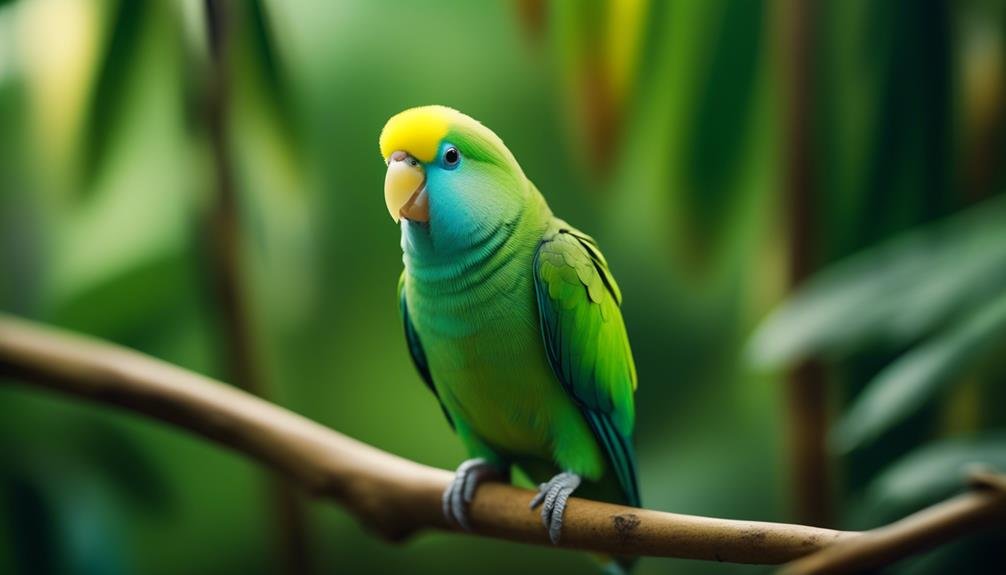
With their vibrant colors and distinctive personalities, Parrotlets are popular pets among bird enthusiasts. These small birds belong to the Parrotlet family and are known for their big parrot personality in a small body. However, they can be nippy and feisty if they aren’t satisfied.
Parrotlets are beloved as pets due to their unique traits and behaviors. Yellow Faced Parrotlets, in particular, have a stunning combination of colors. Their head is mostly bright yellow, spreading to the chest and turning green on the lower abdomen. The back of their head has a light blue-grey color, while their wings and back are dark olive green with grey tones.
Their quiet nature also makes them suitable as apartment pets.
Colors
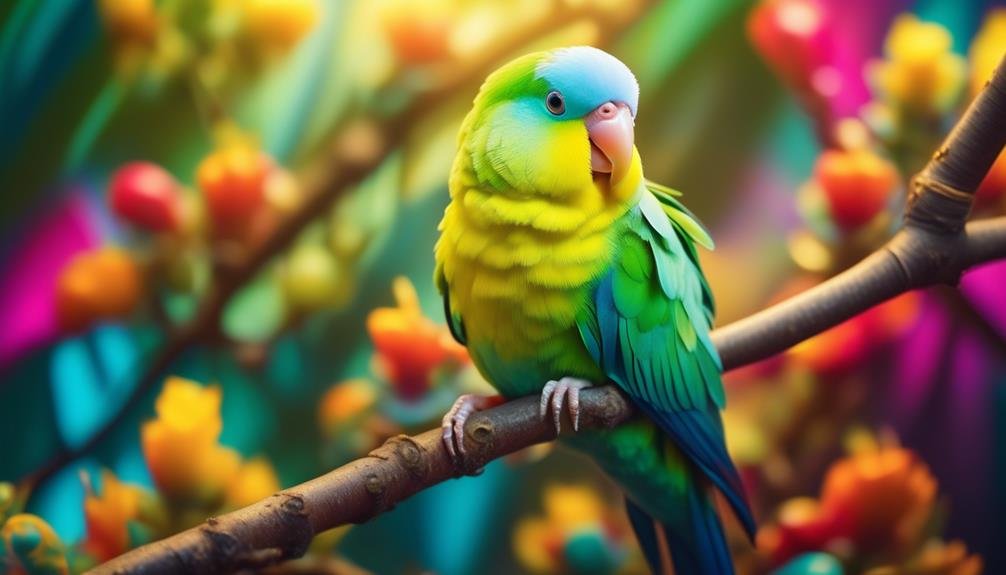
Parrotlets of the Yellow Faced species display a stunning array of colors in their plumage.
Their head is mostly bright yellow, which spreads to the chest and transitions to a vibrant green on the lower abdomen.
The back of their head showcases a light blue-grey color, while their wings and back are adorned with dark olive green hues with subtle grey undertones.
Their flight feathers are a striking dark blue, which contrasts beautifully with their pale, horn-colored beak that features a distinctive black spot on top.
These vibrant colors make the Yellow Faced Parrotlet an eye-catching and charming addition to any avian enthusiast’s collection.
Sounds
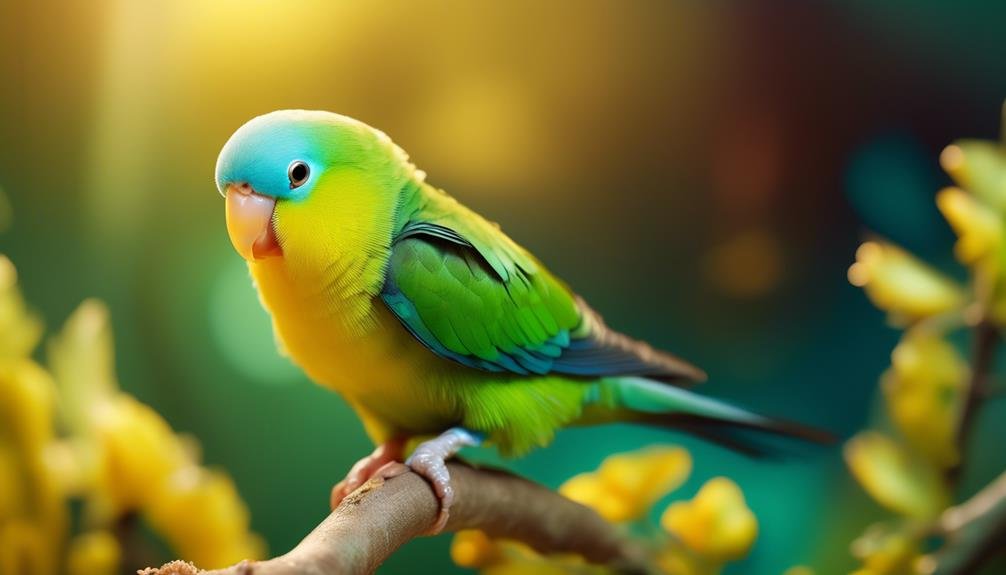
After showcasing their stunning array of colors, the Yellow Faced Parrotlets also have a unique repertoire of sounds. They may be relatively quiet birds, but they make natural calls consisting of bright chirps and tweets. These melodic sounds can bring a sense of joy and cheerfulness to any environment.
Additionally, some individuals can even learn a few basic words to repeat, adding a touch of humor and entertainment to their vocal abilities. Moreover, their ability to mimic basic sounds like alarms or whistles can create a playful and interactive atmosphere.
The combination of their natural calls and mimicry skills make the Yellow Faced Parrotlets a charming and delightful companion to have around.
Housing and Care
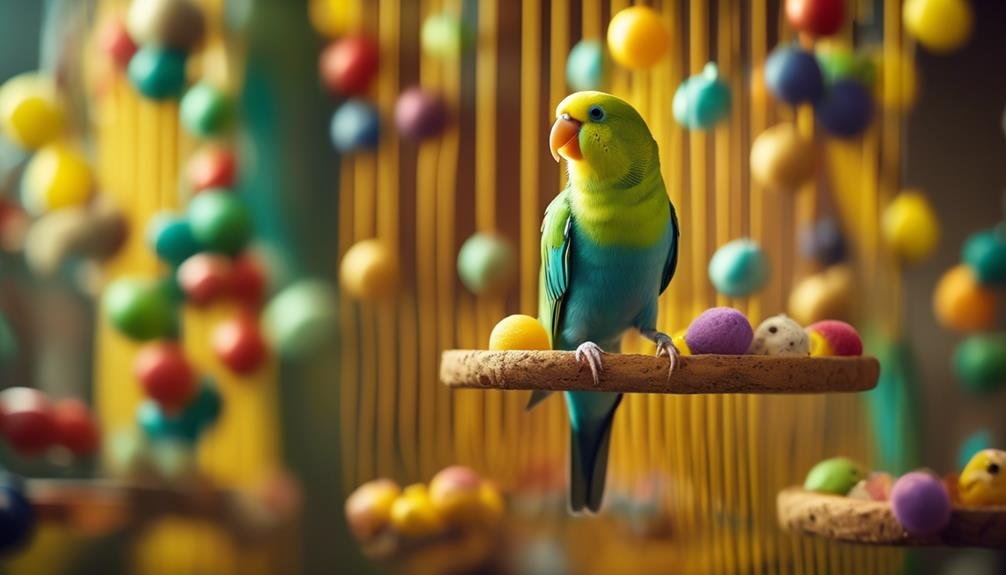
To ensure the well-being of Yellow Faced Parrotlets, providing appropriate housing and care is essential. Due to their small size, these parrotlets don’t require much space but a large and spacious cage is ideal for them. The cage should have enough room for them to fly, stretch their wings, and play. It should also be equipped with perches, toys, and a variety of enrichment activities to keep them mentally and physically stimulated.
Regular veterinary check-ups can help ensure their well-being, and providing a balanced diet and mental stimulation can contribute to their longevity. Proper care includes providing fresh water, a nutritious diet consisting of pellets, seeds, fruits, and vegetables, and regular cleaning of the cage to maintain a clean and hygienic environment.
Yellow Faced Parrotlets also thrive on social interaction, so spending time with them and providing companionship is crucial for their overall well-being.
Diet and Nutrition
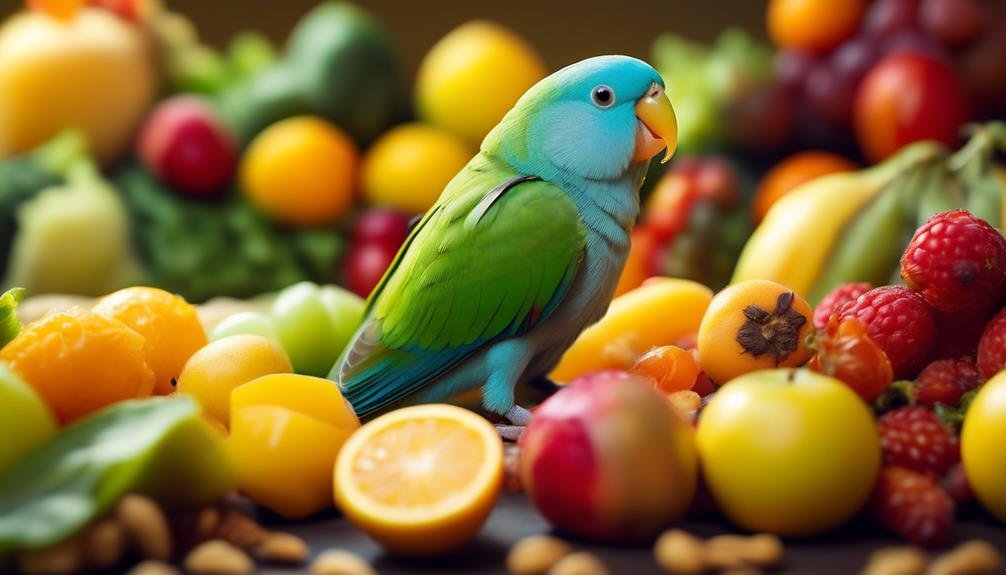
A proper diet and nutrition plan is crucial for the health and well-being of Yellow Faced Parrotlets. These vibrant and charming birds require a balanced and varied diet to thrive. Here are three important points to consider when it comes to their diet and nutrition:
- Fresh fruits and vegetables: Including a variety of fresh fruits and vegetables in their diet ensures they receive essential vitamins and minerals. This not only supports their overall health but also enhances their colorful plumage.
- High-quality pellets: Providing high-quality pellets specifically formulated for parrotlets ensures they receive the necessary nutrients for optimal health. These pellets should make up a significant portion of their diet.
- Limited treats: While treats can be given occasionally, it’s important to limit their intake to prevent weight gain and nutritional imbalances. Opt for healthy options such as small pieces of fruit or vegetables.
Training and Bonding
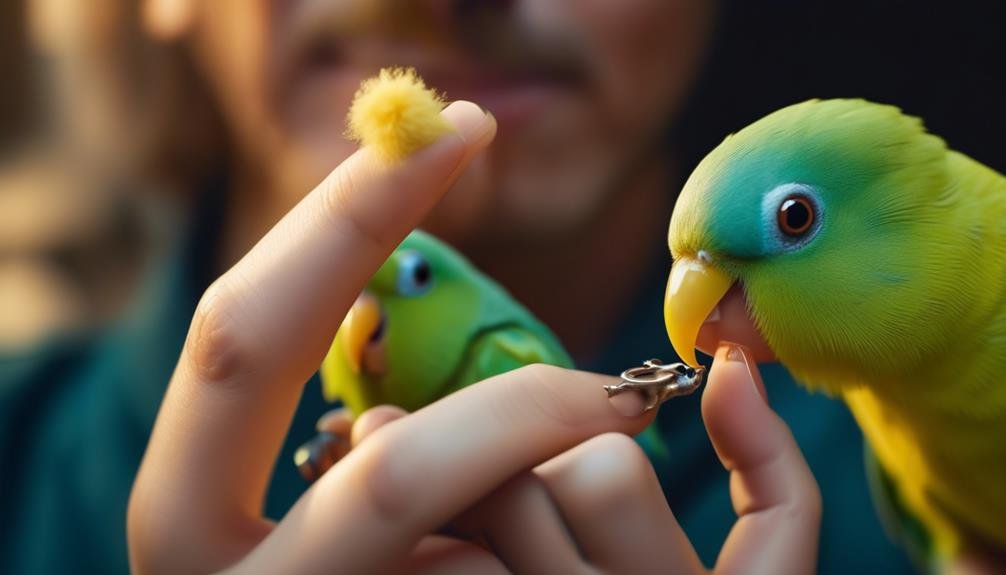
Training and bonding with Yellow Faced Parrotlets is essential for building a strong and rewarding relationship with these intelligent and social birds. These parrotlets are highly trainable and can learn a variety of tricks and commands. Positive reinforcement techniques, such as using treats and praise, are effective in teaching them new behaviors. It’s important to start training from a young age to establish good habits and prevent any potential behavior issues.
Additionally, bonding with your Yellow Faced Parrotlet is crucial for creating a trusting and affectionate relationship. Spending quality time with your bird, such as through playtime and cuddling, will help strengthen the bond between you. Regular socialization and interaction are also important to prevent boredom and ensure your parrotlet remains happy and well-adjusted.
Frequently Asked Questions
Are Yellow Faced Parrotlets Good for First-Time Bird Owners?
Yes, yellow faced parrotlets can be good for first-time bird owners. They are small, colorful, and have a relatively quiet nature. With proper care and attention, they can make charming and delightful pets.
Do Yellow Faced Parrotlets Require Any Special Grooming or Maintenance?
Yellow Faced Parrotlets don’t require any special grooming or maintenance. Regular nail trims and occasional baths are sufficient. However, providing a clean and stimulating environment, along with a balanced diet, is essential for their overall health and well-being.
Can Yellow Faced Parrotlets Be Kept in Pairs or Do They Prefer to Be Alone?
Yellow Faced Parrotlets can be kept in pairs or alone, depending on their individual preferences. Some may enjoy the company of another parrotlet, while others may prefer to be the sole bird in their environment.
How Do Yellow Faced Parrotlets Interact With Other Pets in the Household?
Yellow Faced Parrotlets can interact well with other pets if properly introduced and supervised. They are generally social and curious, but caution should be taken to ensure the safety of both the parrotlet and the other pets.
Are Yellow Faced Parrotlets Prone to Any Specific Health Issues or Diseases?
Yellow Faced Parrotlets, like other parrotlet species, can be prone to certain health issues or diseases. Regular veterinary check-ups, a balanced diet, and proper care can help minimize these risks and ensure their overall well-being.
What Makes the Yellow Faced Parrotlet Colorful and Charming?
The Yellow Faced Parrotlet is known for its vibrant plumage and charming personality. With its striking yellow face and colorful feathers, this parrotlet species is a beautiful addition to any aviary. The red bellied parrot introduction of this captivating bird is sure to delight bird enthusiasts and bring joy to any bird lover.
Conclusion
In conclusion, the Yellow Faced Parrotlet is a captivating and colorful bird that brings joy to bird enthusiasts worldwide. With its vibrant plumage, feisty personality, and ability to mimic sounds, this small bird has a big presence. Its beautiful yellow and green feathers make it a truly charming companion.
With the right housing, care, and nutrition, this delightful avian companion can bring years of happiness and companionship to its owner. The Yellow Faced Parrotlet is truly a gem in the world of parrots.

